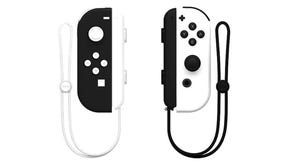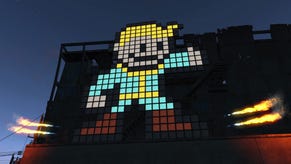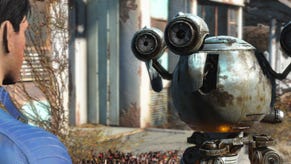Sony announces full PSP spec
PlayStation 2 in a smaller case? Close, but no cigar.
The complete spec for the forthcoming PSP has been announced, revealing a versatile multimedia system much closer to the PS2 in power than expected, and even outperforming its home console sibling in certain areas.
The PSP architecture is powered by a MIPS R4000 CPU core - two of them in fact, with one being designated as the CPU core and another as the "Media Engine". It's not clear whether these cores will both be accessible by game applications, but if so, the system actually has more raw processing power than the PS2 - which is based on a single modified R5900 CPU, the Emotion Engine.
The main PSP CPU will feature floating point and vector floating point co-processors, as well as 3D-CG extended instructions - both of which are absent from the Media Engine, which in effect means that the Media Engine (assuming its usable in-game) will have limited use to gaming applications, but could be used to make certain processor-intensive tasks work.
Graphics in the PSP are driven by a combination of two graphics cores. Graphics Core 2 is similar to the Graphics Synthesizer in the PlayStation 2, but it runs at around half the clock speed of its PS2 counterpart (166Mhz compared with 300Mhz) and as such, has about half of the theoretical polygon throughput (a decent measure of raw graphical power) of the PS2.
Perhaps more interesting is Graphics Core 1, which offers a range of 3D curved surface and other hardware 3D functionality. How useful the more advanced functions in this core will be to development remains to be seen - Sony is likely to make a lot of noise about the NURBS and curved surface abilities of the PSP, but in the real world, developing games to use these tools is extremely difficult and most developers are likely to fall back on good old polygons. However, there's no doubt that other functions of Core 1 - such as compressed texture handling and proper hardware clipping - will speed up graphics on the PSP significantly, and developers who do decide to use the curved surface abilities may well turn out some very impressive games.
In terms of audio, the PSP is also ahead of its home console brethren - with reconfigurable DSPs and full multi-channel 3D sound in hardware, both of which are missing from the PS2. It also features a high quality digital video decoder for playing back movies from the UMD discs.
Oh, speaking of the UMD discs - they apparently have a data throughput of 11mbit, which is enough to watch DVD quality movies, and should make up for the lack of memory on the system. The PSP only has 12Mb of memory in total, with 8Mb on the main CPU core, 2Mb on the Media Engine and 2Mb on Graphics Core 2.
So what else comes in the little box of tricks? Well, as we already knew, it comes equipped with USB 2.0 and Memory Stick slots, and as reported yesterday it comes with 802.11 Wireless LAN and Infra-Red (IrDA) wireless communication abilities.
The system also has a stereo headphone socket (unsurprisingly) and an extension port, which may in future play host to such devices as GPS navigation systems, digital television tuners or even mobile phone data network connections.
One interesting factor which arises from this is the fact that porting games from the PSone to the PSP is not going to be even remotely as trivial as many people had assumed - even getting a PSone game running on PSP without any modifications is going to be a task which will take months rather than days.
However, the system is almost custom-built for running first generation PS2 titles, and it certainly wouldn't be that difficult to get early games like TimeSplitters, Tekken Tag Tournament or Ridge Racer 5 running on the machine. Although the device can't quite rival the PS2 in terms of raw graphics power or memory size, as a portable system it doesn't have to - and it should prove quite capable of producing better graphical quality then the PS2 in a number of surprising places.
What does all this tell us about the price of the PSP? Not a lot, sadly. It's likely that Sony will continue the "razors and razorblades" approach, for a start - so the full price of manufacturing the unit will never be passed on to the consumer.
However, it's also worth noting that although the technology in the device is certainly powerful, it's not got any really cutting edge technology in it, and many of the components (like the MIPS processors) are basically cheap off the shelf units. Sony's promise of competitive pricing with other handheld gaming platforms may not be hollow after all.








